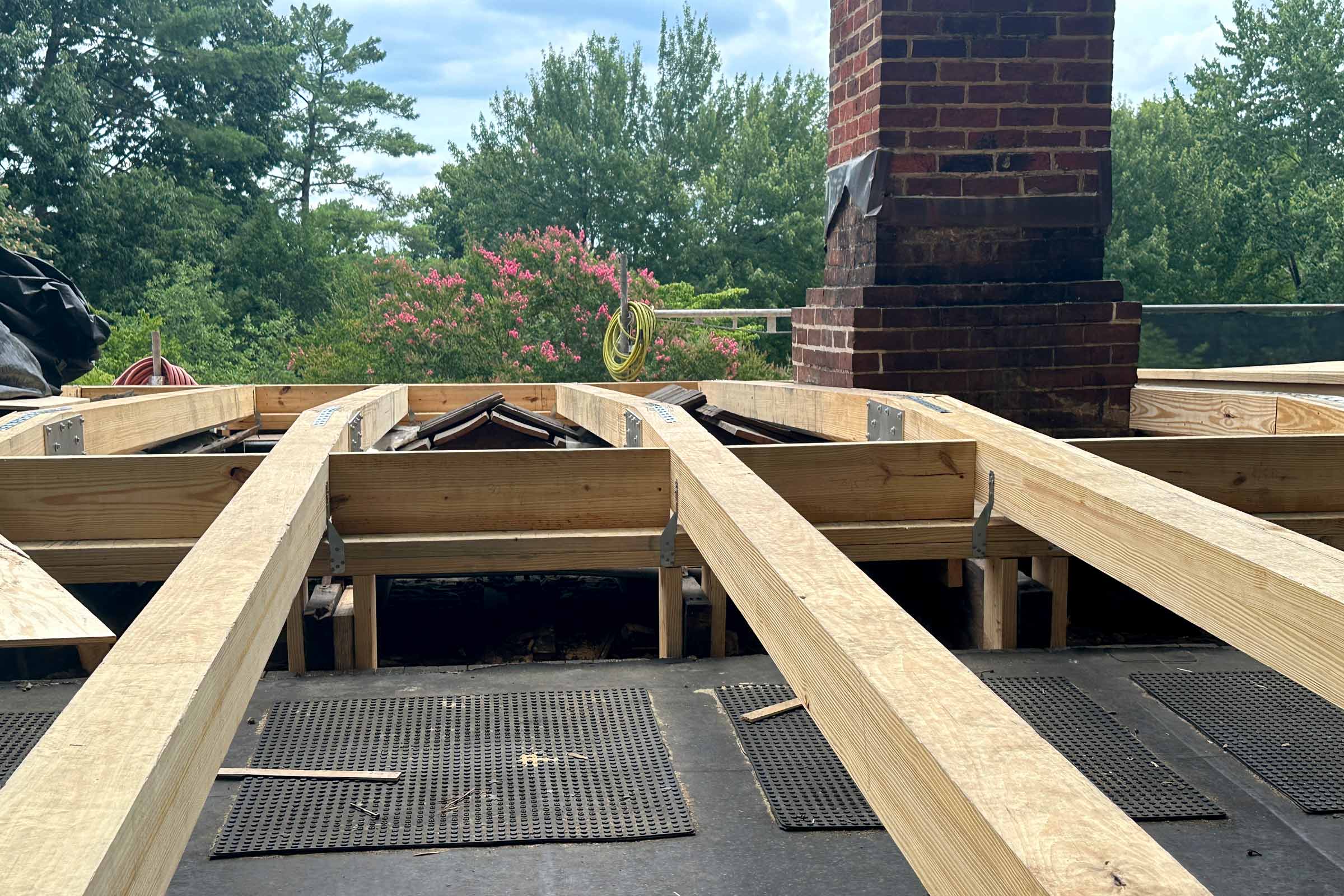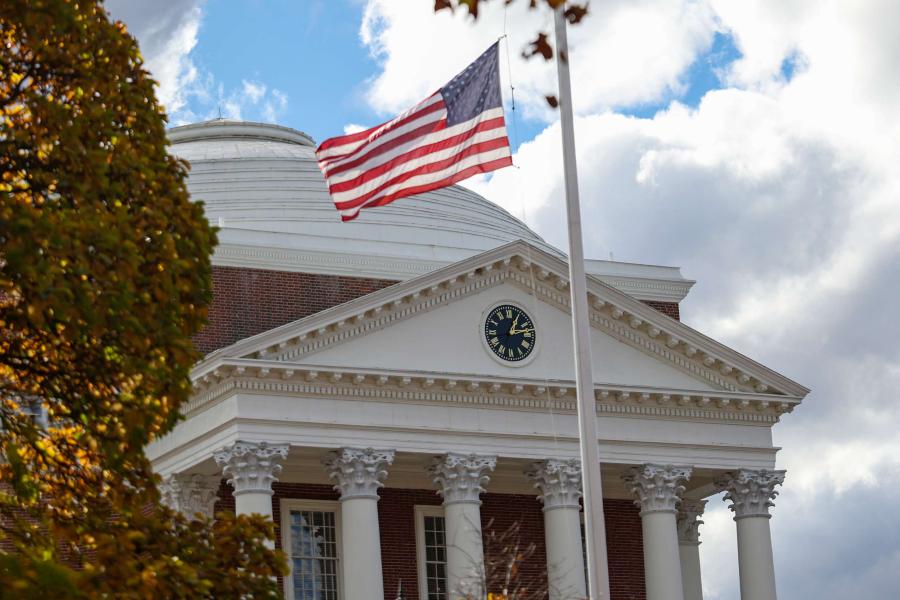The University of Virginia’s Academic Village is looking more like Thomas Jefferson intended.
This summer, work crews replaced the roof over the student rooms between pavilions VI and VIII, a structure that encapsulates the historic fabric of the original Jeffersonian roofs. When Thomas Jefferson designed UVA’s Academical Village, he envisioned flat roofs over the student rooms, so he designed an angled, serrated roof topped with a flat deck. The water was supposed to run through the deck boards and into the tin-lined valleys of the wood-serrated roofs before running off onto the ground.
Unfortunately, the roofs leaked.
In the 1830s, carpenters installed pitched slate roofs over the Jeffersonian roofs, which stopped the leaks – and enclosed the original roofs, mostly preserving them.
The University is now using modern materials to restore the appearance of the original Jeffersonian roofs, while preserving the historic elements. The first Jeffersonian roofs were made of heart pine; the new roofs will feature a system of plywood sheathing with a rubber membrane.







